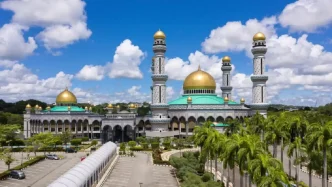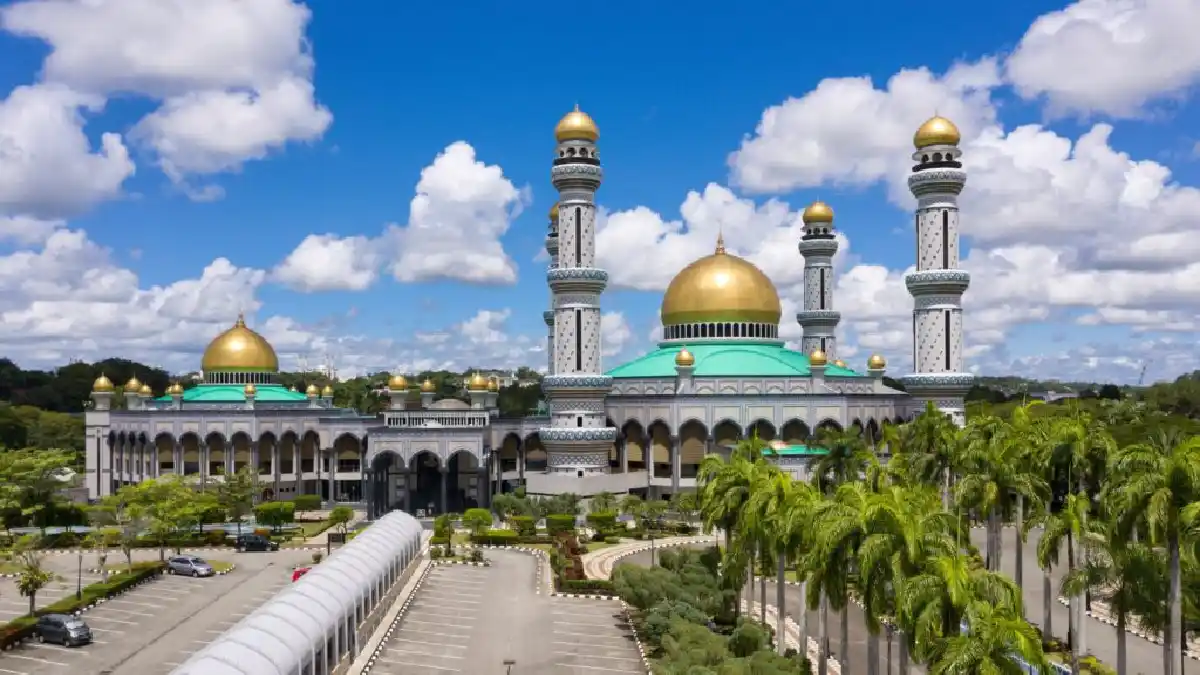Brunei’s trade balance saw a modest year-on-year increase of 3.4 percent in April 2025, reaching 395.9 million Brunei dollars (US$310.1 million), according to the latest report from the Department of Economic Planning and Statistics (DEPS). This uptick, driven largely by robust exports in mineral fuels and chemicals, comes as the small Southeast Asian sultanate continues its push to diversify an economy historically reliant on oil and gas revenues.
Export Strength Underpins Trade Gains
The DEPS report highlights that Brunei’s merchandise exports for April totaled 1,167.1 million Brunei dollars (US$917.7 million), with mineral fuels dominating at 74.6 percent of the export share. This reflects the country’s entrenched position as a key player in the global energy market, bolstered by its abundant oil and natural gas reserves on the northern coast of Borneo Island. Chemicals followed as the second-largest export category, contributing 23.2 percent, while machinery and transport equipment made up a smaller fraction at 0.7 percent.
Despite the positive trade balance, Brunei’s overall trade volume for April 2025 declined significantly by 18 percent year-on-year, dropping from 2,365 million Brunei dollars (US$1,852.4 million) in April 2024 to 1,938.3 million Brunei dollars (US$1,524.1 million). This contraction suggests broader challenges in sustaining trade momentum amid fluctuating global demand for energy commodities, a critical concern for a nation where hydrocarbons remain the economic backbone.
Imports Show Slight Growth
On a month-on-month basis, Brunei’s imports recorded a marginal increase of 1.5 percent in April, driven by higher values across most commodity sections. Russia emerged as the leading source of imports, accounting for 26.9 percent of the total, followed by regional neighbor Malaysia at 16.9 percent and Norway at 14.6 percent. While the DEPS report did not specify the nature of these imports, the diversity of trade partners indicates Brunei’s engagement with both regional and global supply chains, potentially as part of efforts to support non-oil sectors.
This slight uptick in imports, juxtaposed with the overall trade volume decline, raises questions about the balance between domestic consumption and export-driven growth. Analysts suggest that the increase in imports could reflect investments in infrastructure or technology aimed at economic diversification, though official data on specific categories remains limited.
A Push Beyond Oil and Gas
Brunei’s economy has long been synonymous with oil and natural gas, sectors that have fueled its high per capita income and underpinned government revenues. However, the volatility of global energy markets and the finite nature of fossil fuel reserves have prompted the government to prioritize diversification under its long-term development framework, Vision Brunei 2035. This strategy aims to reduce dependence on hydrocarbons by fostering growth in areas such as tourism, halal industries, and downstream petrochemicals.
The strong performance of chemicals in the export mix—accounting for nearly a quarter of total exports in April—offers a glimpse of progress in this direction. Downstream processing of oil and gas into chemical products represents a strategic move to add value domestically before export, a trend that could bolster economic resilience if sustained. However, the overwhelming dominance of mineral fuels in the export profile underscores the scale of the challenge ahead. As one industry observer noted, “Diversification is a long game, and while Brunei has made strides, the oil and gas sector will remain the economic anchor for the foreseeable future”.
Regional Context and Global Headwinds
Brunei’s trade performance must also be viewed within the broader Southeast Asian economic landscape. The region, home to dynamic economies like Indonesia, Malaysia, and Vietnam, has seen mixed trade outcomes in 2025, with global demand softening due to inflationary pressures and geopolitical uncertainties. For Brunei, the 18 percent year-on-year decline in total trade volume mirrors challenges faced by other resource-dependent economies in the Association of Southeast Asian Nations (ASEAN), where external demand for commodities often dictates economic fortunes.
Malaysia, a key trading partner for Brunei, has itself grappled with balancing export growth against domestic economic priorities. The 16.9 percent share of imports from Malaysia likely includes manufactured goods and agricultural products, reflecting Brunei’s reliance on regional neighbors to meet domestic needs. Meanwhile, the significant import share from Russia—26.9 percent—may raise eyebrows given global sanctions and trade disruptions stemming from ongoing geopolitical tensions. While there is no indication of non-compliance with international trade norms, the reliance on Russian imports could expose Brunei to supply chain risks if global pressures intensify.
Domestic Implications of Trade Trends
For Brunei’s population of just over 440,000, the trade balance increase offers a measure of economic stability, particularly as the government channels oil revenues into public services and infrastructure. The sultanate’s high standard of living, underpinned by zero income tax and subsidized healthcare, remains a point of national pride. Yet, the long-term sustainability of this model hinges on reducing oil dependency—a concern that resonates with younger Bruneians seeking opportunities beyond traditional sectors.
Small and medium enterprises (SMEs) in non-oil industries, such as halal food production and eco-tourism, are often touted as engines of future growth. Government initiatives, including financial incentives and training programs, aim to empower local entrepreneurs to compete in regional markets. However, the scale of exports in these nascent sectors remains negligible compared to energy exports, highlighting the gap between policy ambition and economic reality.
Environmental and Social Dimensions
Brunei’s heavy reliance on mineral fuels also carries environmental implications, a growing concern in a region vulnerable to climate change. While the government has pledged to reduce carbon emissions and invest in renewable energy, progress has been slow. The export of mineral fuels, while economically vital, contributes to global greenhouse gas emissions, placing Brunei at a crossroads between economic imperatives and environmental responsibility.
Socially, the push for diversification intersects with cultural and religious values central to Bruneian identity. The halal industry, for instance, aligns with the nation’s Islamic principles and offers a pathway to economic innovation. Yet, scaling such initiatives requires overcoming structural barriers, including limited domestic market size and competition from larger regional players like Malaysia and Indonesia.
Looking Ahead: Balancing Growth and Diversification
As Brunei navigates its economic future, the modest trade balance increase in April 2025 serves as both a reassurance and a reminder of the work ahead. The government’s commitment to Vision Brunei 2035 provides a roadmap, but translating policy into measurable outcomes remains a complex endeavor. If diversification efforts gain traction, sectors like chemicals and halal products could gradually reshape the economic landscape, reducing vulnerability to global energy price swings.
For now, the sultanate’s trade performance reflects a delicate balance between leveraging its natural resource wealth and building a more resilient economy. As global economic conditions evolve, questions linger about how quickly Brunei can pivot to a diversified future—and whether it can do so without sacrificing the stability that has long defined its national story.
















